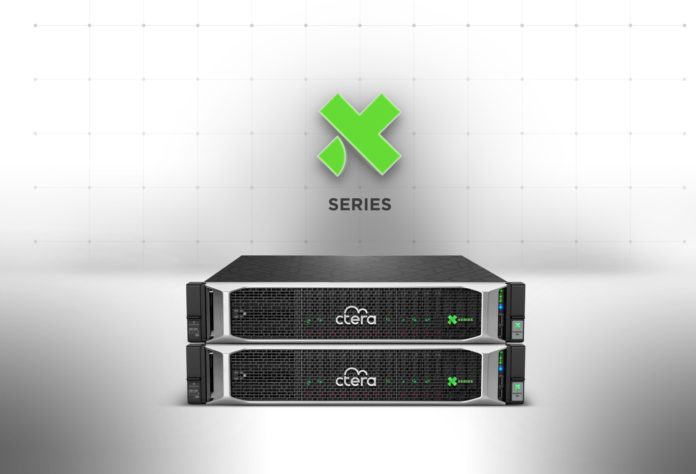CTERA has announced v7 of its cloud-based file storage and sharing software, saying it can replace local NAS with fast and secure access to files in the public cloud.
Its Enterprise File Services Platform has faster data transmission to/from the cloud, zoned security, a file migration engine and Apple Mac UI integration.
CTERA CTO Aron Brand set the scene in a supplied quote: “The pandemic has forced enterprises to support a distributed workforce with a heavy reliance on remote IT, whether in smaller branches or home offices. The innovations in CTERA 7.0 empower all organisations to keep data close to users wherever they are, to easily migrate file workloads to the cloud, and to deliver consumer-grade user experiences.”
Jeff Newman, an IT Architect at American multinational manufacturing company W. L. Gore & Associates, complemented Brand’s pitch with a supportive quote talking about its ROBO (Remote Office/Branch Office) sites: “CTERA 7.0 has been a game-changer for us, offering an automated migration utility that has made it easier and faster for us to migrate data and retire remote servers across our locations in Europe.”
The four main elements in CTERA 7 are;
- CTERA Direct, a new edge-to-cloud transfer protocol, described as “ultra-fast”, synchronises data at a throughput of over 30TB/day per site, with minimal sensitivity to network latency. That means 347MB/sec, assuming 24-hour days.
- CTERA Zones enable customers to dynamically segment their global file system into any number of geographic locations and keep sensitive data within a zone; good for data sovereignty and compliance requirements.
- CTERA Migrate is a built-in migration engine that enables automated data discovery and import from NAS systems such as NetApp, Dell EMC, and Windows Server, with full preservation of folder structure and permissions. This builds on CTERA’s Media Filer capabilities. Migrated files are stored in S3 object access format.

- CTERA MacAssist provides Mac Finder integration with icon overlays, thumbnail support, and enhanced search experiences.
CTERA also released new versions of its mobile app for iOS and Android for consistent user experiences across desktop, mobile, and cloud.
The Direct feature is said to combine zero-trust content distribution with the cost savings of disaggregated architecture routing data to the nearest cloud location. It’s intended both for distributed data-rich environments, such as creative media and healthcare offices, and to boost responsiveness for work-from-home users using CTERA desktop and VDI agents.
Comment
In essence, CTERA is saying ditch your ROBO NAS box and replace it with our Edge appliance. This caches files read from a cloud object store which is cheap, secure and scalable. On this basis CTERA competes with suppliers like Nasuni, and also NetApp and Isilon.
CTERA and Nasuni are evolving from niche cloud storage gateway and collaboration services to full-scale file services, and so taking on the mainstream NAS suppliers.
It seems clear that classic on-premises filer suppliers like NetApp and Isilon are in turn deepening their competition with cloud storage gateway/file collaborators like CTERA and Nasuni. They are extending their file storage services into the public cloud on the one hand, and supporting skinny edge filers/virtual appliances on the other.
For example, NetApp has Global File Cache Edge Instances for branch offices. These instances are NetApp SW in a Hyper-V virtual machine, obviously running in a local server. SSD storage is recommended.
Dell Technologies’ Isilon product range includes an SD Edge Filer for ROBO sites.
This is turning into a general competition to provide ROBO file services and the NetApps and Isilon of this world cannot afford to let CTERA and Nasuni colonise the edge. Because if they do that then their mainstream data centre file services sites will be at risk.








